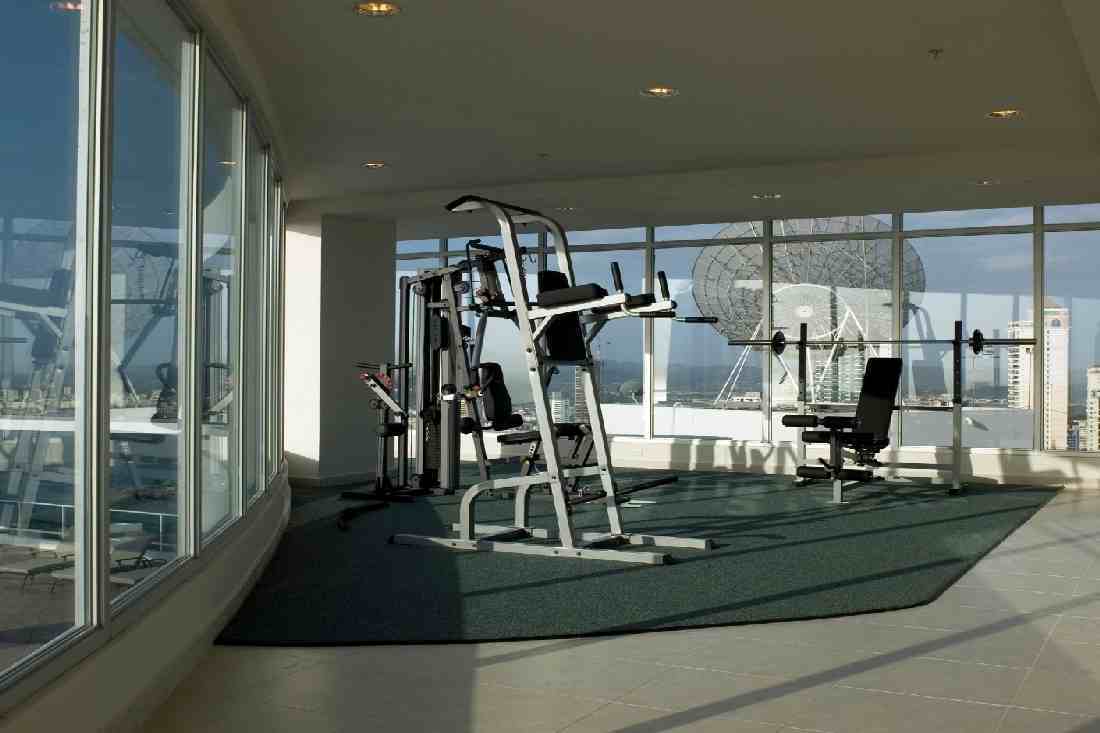You or your partner may think that your snoring is normal, and it may be, but it could also be a sign of sleep apnea.
Obstructive sleep apnea (OSA) is the most common form of sleep apnea, a condition that causes you to stop breathing or breathe very shallowly during sleep. Breathing pauses can last a few seconds or minutes and usually end with a wheezing or choking sound.
This is not a coincidence that happens once or twice overnight. Obstructive sleep apnea is the occurrence of at least 15 events per hour of sleep or five or more events per hour of sleep, and other symptoms of sleep apnea, such as snoring, sleepiness, or wheezing during the day and choking attacks in the middle of the night.
Knowing More About Obstructive Sleep Apnea
During sleep, the muscles in the throat relax, and the tongue and soft tissues can collapse, causing the airway to narrow or become blocked. This obstruction disrupts normal breathing, leading to a decrease in the oxygen levels in the blood. The brain senses the drop in oxygen and prompts a brief awakening or arousal to restore normal breathing. These arousals are often so brief that individuals with OSA may not remember them, but they can significantly disrupt the quality of sleep.
Common signs and symptoms of obstructive sleep apnea include:
- Loud, Chronic Snoring: Snoring is often the primary symptom of OSA, although not everyone who snores has sleep apnea.
- Excessive Daytime Sleepiness: People with OSA often experience excessive daytime sleepiness, feeling tired or fatigued during the day even after a full night’s sleep.
- Gasping Or Choking During Sleep: Episodes of gasping or choking can occur as the body tries to reopen the airway.
- Witnessed Breathing Interruptions: Family members or bed partners may observe the pauses in breathing during sleep.
- Morning Headaches: OSA can cause headaches upon awakening due to the decrease in oxygen levels during sleep.
- Difficulty Concentrating and Memory Problems: Impaired sleep can lead to difficulties with concentration, memory, and overall cognitive function.
- Irritability And Mood Changes: Sleep deprivation and interrupted sleep can contribute to irritability, mood swings, and a decreased quality of life.
- Night-time Sweating and Restless Sleep: Some individuals with OSA may experience night sweats and restlessness during sleep.
Obstructive sleep apnea is a serious condition that can have long-term health consequences if left untreated. It is associated with an increased risk of high blood pressure, heart disease, stroke, diabetes, and other health problems.
Symptoms of Obstructive Sleep Apnea
Some common symptoms of obstructive sleep apnea include:
- Loud And Chronic Snoring: Snoring is often a prominent symptom of OSA. It is typically loud, disruptive, and may be punctuated by periods of silence followed by gasps or choking sounds as breathing resumes.
- Excessive Daytime Sleepiness: People with OSA often experience excessive daytime sleepiness, even after a full night’s sleep. This persistent sleepiness can significantly impact daily activities, work performance, and overall quality of life.
- Fatigue And Tiredness: OSA disrupts the normal sleep cycle, preventing individuals from obtaining restful and restorative sleep. As a result, they may wake up feeling fatigued, even after a seemingly adequate duration of sleep.
- Witnessed Breathing Pauses: Often, bed partners or family members notice episodes of breathing pauses during sleep. These pauses may last for several seconds and are usually followed by a loud snort or gasp as the person resumes breathing.
- Morning Headaches: Individuals with OSA may frequently wake up with headaches, particularly in the morning. These headaches are often described as a dull, throbbing pain.
- Fragmented Sleep and Insomnia: OSA can lead to frequent awakenings during the night, causing sleep to be fragmented and restless. Some individuals may also have trouble falling asleep initially (insomnia).
- Irritability And Mood Changes: Chronic sleep disruption can contribute to irritability, mood swings, and a decreased ability to concentrate or remember things. Personality changes and feelings of depression may also be observed.
- Dry Mouth or Sore Throat: People with OSA may wake up with a dry mouth or a sore throat due to breathing through the mouth during sleep.
- Decreased Libido and Sexual Dysfunction: OSA has been associated with decreased libido and sexual dysfunction in both men and women.
Risk Factors of Obstructive Sleep Apnea
Several risk factors contribute to the development of OSA. Here are some of the common risk factors:
- Obesity: Excess body weight, particularly in the neck and upper body, increases the risk of OSA. The accumulation of fat around the neck can narrow the airway and make it more prone to collapse during sleep.
- Age: OSA can occur at any age, but the risk tends to increase with age. This is partly due to changes in muscle tone and loss of elasticity in the airway as people get older.
- Gender: Men are more likely to develop OSA than premenopausal women. However, after menopause, the risk for women increases and becomes comparable to that of men.
- Family History: There appears to be a genetic component to OSA, as it tends to run in families. Certain physical traits inherited from parents, such as narrow airways or facial structure, can increase the likelihood of developing OSA.
- Smoking And Alcohol Use: Smoking and excessive alcohol consumption can contribute to airway inflammation and relaxation of the throat muscles, making the airway more susceptible to collapse during sleep.
- Nasal Congestion and Anatomical Factors: Chronic nasal congestion, whether due to allergies, deviated septum, or other causes, can contribute to the development of OSA. Additionally, certain anatomical factors such as enlarged tonsils, a large tongue, or a small jaw can narrow the airway and increase the risk.
- Medications And Sedatives: Some medications, such as tranquilizers and sedatives, can relax the throat muscles, leading to airway collapse and OSA. It is important to discuss any potential side effects with your healthcare provider.
- Medical Conditions: Certain medical conditions are associated with an increased risk of OSA. These include hypertension (high blood pressure), heart disease, type 2 diabetes, and metabolic syndrome.
- Sleep Position: Sleeping on your back can make OSA more likely because gravity pulls the throat muscles and tongue backward, narrowing the airway. Sleeping on your side or using positional therapy can help reduce the risk.
What Is the Diagnosis of Obstructive Sleep Apnea?
The diagnosis of obstructive sleep apnea (OSA) typically involves a combination of medical history assessment, physical examination, and sleep studies. Here are the main diagnostic methods used for OSA:
Medical History
The doctor will ask you about your sleep patterns, symptoms, and overall health. Common symptoms of OSA include loud snoring, excessive daytime sleepiness, witnessed breathing pauses during sleep, waking up with a choking or gasping sensation, morning headaches, and difficulty concentrating.
Physical Examination
The doctor may perform a physical examination to check for physical characteristics that could contribute to sleep apnea, such as obesity, large neck circumference, enlarged tonsils or adenoids, narrow airway passages, or a receding jaw.
Sleep Studies
Sleep studies, also known as polysomnography, are the most common tests used to diagnose sleep apnea and determine its severity. These studies are typically conducted in a sleep centre or sometimes in the comfort of your own home.
- Overnight Polysomnography (In-Lab Study): This comprehensive sleep study involves spending a night at a sleep centre while various measurements are taken. Electrodes are attached to different parts of your body to monitor brain activity, eye movements, muscle activity, heart rate, respiratory effort, oxygen levels, and more. This data helps identify apnea events and measure their frequency and severity.
- Home Sleep Apnea Testing (HSAT): In some cases, if OSA is strongly suspected and there are no other underlying medical conditions, a simplified sleep study can be conducted at home. The device used in HSAT usually measures breathing patterns, oxygen levels, and sometimes heart rate during sleep. It is important to follow the instructions provided by the sleep specialist to ensure accurate results.
Additional Tests
Depending on the specific situation, additional tests may be conducted to assess the underlying causes or effects of sleep apnea. These may include:
- Multiple Sleep Latency Test (MSLT): This test measures daytime sleepiness and assesses how quickly you fall asleep in a quiet environment during the day. It helps evaluate the impact of sleep apnea on your daily functioning.
- Maintenance of Wakefulness Test (MWT): This test measures your ability to stay awake and alert during the day, which is essential for activities that require sustained attention, such as driving. It helps determine if you have excessive daytime sleepiness because of sleep apnea.
- Imaging Studies: Occasionally, imaging studies like X-rays, CT scans, or MRI may be recommended to evaluate the airway structures and identify any obstructions or abnormalities.
Treatment
The treatment options for obstructive sleep apnea (OSA) can vary depending on the severity of the condition and individual circumstances. Here are some common treatment approaches:
- Continuous Positive Airway Pressure (CPAP) Therapy: This is the most common and effective treatment for OSA. It involves wearing a mask over your nose or nose and mouth while you sleep. The mask is connected to a machine that delivers a continuous flow of air pressure, which helps keep the airway open and prevents apnea episodes.
- Oral Appliances: Some individuals with mild to moderate OSA may benefit from wearing oral appliances, also known as mandibular advancement devices. These devices are custom-made and fit in the mouth, repositioning the jaw and tongue to keep the airway open during sleep.
- Weight Loss: In overweight or obese individuals, losing weight can often lead to significant improvements in sleep apnea symptoms. It can help reduce the amount of tissue in the throat that may contribute to airway obstruction.
- Positional Therapy: Some people primarily experience apnea when sleeping in certain positions, such as on their back. In such cases, positional therapy techniques, such as using specialized pillows or devices that encourage side sleeping, can be beneficial.
- Surgery: Surgical intervention may be considered for severe cases of OSA that do not respond well to other treatments or when an anatomical abnormality is present. Surgical options may include uvulopalatopharyngoplasty (UPPP), genioglossus advancement, maxillomandibular advancement, or other procedures aimed at widening the airway.
- Lifestyle Modifications: Certain lifestyle changes can help manage OSA symptoms. These include avoiding alcohol and sedatives, quitting smoking, practicing good sleep hygiene, and maintaining a regular sleep schedule.
What Are the Preventive Steps for Obstructive Sleep Apnea?
If you suspect you have OSA or have been diagnosed with it, there are several preventive steps you can take to manage the condition and improve your sleep quality. Here are some key preventive measures for obstructive sleep apnea:
- Maintain A Healthy Weight: Excess weight can contribute to the narrowing of the airway and increase the risk of OSA. Losing weight through a combination of regular exercise and a balanced diet can help reduce the severity of sleep apnea.
- Sleep On Your Side: Sleeping on your back can promote the collapse of the airway, worsening the symptoms of OSA. Try to sleep on your side to keep the airway open. You can use pillows or other devices to help maintain this position.
- Elevate The Head of Your Bed: Raising the head of your bed by a few inches can help prevent the collapse of the airway and improve breathing during sleep. This can be achieved by using a specially designed wedge pillow or an adjustable bed.
- Avoid Alcohol and Sedatives: Alcohol and sedative medications can relax the muscles in the throat, making the airway more prone to collapse. Avoid consuming alcohol, particularly close to bedtime, and discuss alternative medication options with your doctor if necessary.
- Quit Smoking: Smoking irritates and inflames the throat and airway, increasing the risk of sleep apnea. Quitting smoking can significantly improve your respiratory health and reduce the severity of OSA.
- Maintain Good Sleep Hygiene: Establish a regular sleep schedule and create a relaxing bedtime routine to promote better sleep. Avoid electronic devices, caffeine, and large meals close to bedtime.
- Use A Continuous Positive Airway Pressure (CPAP) Machine: If prescribed by your doctor, a CPAP machine can be highly effective in treating OSA. It delivers a steady flow of air through a mask worn over your nose or mouth, keeping the airway open during sleep.
- Consider Oral Appliances: In some cases, a dentist specializing in sleep medicine can provide custom-fit oral appliances that help keep the airway open during sleep. These devices can be an alternative or adjunct to CPAP therapy.
- Regular Follow-Up with Your Healthcare Provider: Stay in touch with your doctor to monitor your sleep apnea and ensure that your treatment plan remains effective. Adjustments to therapy or other interventions may be necessary over time.
It’s important to note that these preventive steps can help manage the symptoms of obstructive sleep apnea, but they may not cure the condition entirely. If you suspect you have sleep apnea or have been diagnosed with it, it is crucial to seek medical advice and follow the guidance of healthcare professionals. They can provide a personalized treatment plan tailored to your specific needs.




